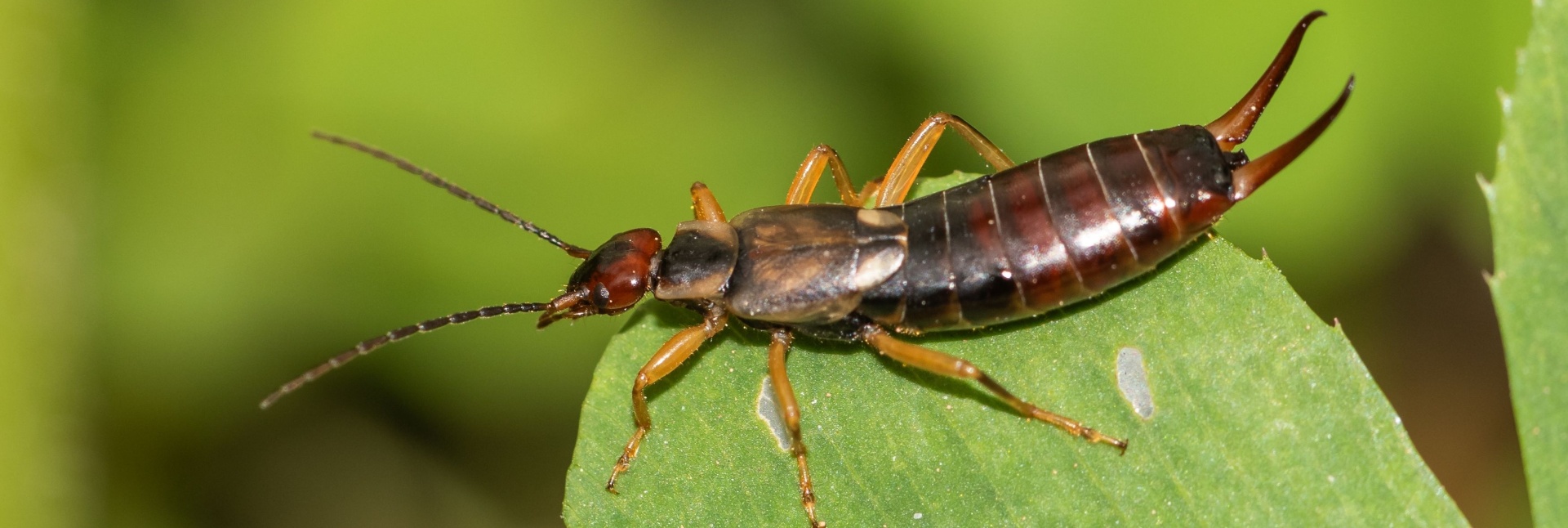Earwig Behavior Explained: Why They’re Common in Charleston Gardens

If you’ve spent any time tending to a garden in Charleston, South Carolina, you may have noticed a curious insect scurrying about, especially after a rain. These insects, known as earwigs, are common visitors in many Charleston gardens and yards. Understanding earwig behavior can help gardeners and homeowners know when to be concerned and how to manage these insects effectively.
For expert advice on managing pests like earwigs in Charleston, trust the professionals at Team Veterans Pest Control; we offer reliable and environmentally responsible pest control services tailored to the local environment.
In this blog, we’ll dive into what makes earwigs so prevalent in Charleston gardens, explain their unique behavior, and discuss when and how to address potential infestations.
What Are Earwigs?
Earwigs are small, elongated insects characterized by pincers, or forceps, on their rear end. Despite some myths, earwigs do not crawl into human ears. They are mostly nocturnal and prefer dark, moist environments where they can hide during the day.
Earwigs feed on a variety of organic matter, including decaying plant material, fungi, and sometimes live plants. This diverse diet means their impact on gardens can be mixed—they may help by consuming dead material but can also damage flowers, fruits, and vegetables when populations are high.
Why Are Earwigs Common in Charleston Gardens?
One of the main reasons earwigs thrive in Charleston gardens is the region’s warm, humid climate. Charleston’s subtropical weather provides an ideal environment for earwig survival and reproduction. The consistent moisture from rain and humidity creates plenty of damp hiding spots, which earwigs prefer.
Gardens rich in organic mulch, dense shrubs, and shaded areas are especially attractive to earwigs because they provide protection from predators and harsh weather. Additionally, Charleston’s gardens often have abundant plant material that serves as a food source.
The local climate also influences earwig behavior, with earwigs being more active and noticeable during the warmer months when they seek food and mates.
Understanding Earwig Behavior
Nocturnal and Moisture-Loving
Earwigs are primarily active at night, coming out under the cover of darkness to forage for food. During the day, they hide in cool, damp places such as under rocks, leaf litter, garden mulch, and even inside cracks around foundations.
Their preference for moisture explains why they are frequently spotted after rain or in irrigated garden beds. Reducing excess moisture can help limit their population.
Omnivorous Diet and Feeding Habits
Earwig behavior includes feeding on a variety of materials. They consume decaying leaves, fungi, and small insects but can also nibble on soft plant tissues such as flowers, fruits, and vegetables. When earwig populations are low, their feeding can actually benefit gardens by helping decompose organic matter and preying on harmful insects.
However, when populations surge, earwigs can cause noticeable damage to tender plants. This damage often appears as irregular holes or ragged edges on leaves and petals.
Reproductive Behavior and Lifecycle
Earwigs reproduce rapidly in warm climates like Charleston’s. Females lay eggs in moist soil or hidden crevices and guard their young until they hatch. This protective maternal behavior ensures high survival rates for nymphs, contributing to population booms in favorable conditions.
The lifecycle from egg to adult can be as short as a few weeks, allowing multiple generations each year, which can intensify garden infestations.
When Should You Be Concerned About Earwigs?
In small numbers, earwigs usually do not cause significant garden problems and can even be beneficial. However, large populations can lead to considerable plant damage, especially to vegetables like lettuce, strawberries, and beans, or ornamental plants like dahlias and chrysanthemums.
If you notice chewed leaves, damaged flowers, or small holes in fruits, earwigs might be the culprits. These signs, along with visible earwig sightings, indicate that intervention may be needed.
How to Manage Earwigs in Charleston Gardens
Effective management of earwigs involves a combination of cultural practices and, when necessary, professional pest control.
Reduce Moisture and Shelter
Since earwig behavior depends heavily on moisture and shelter, removing excess moisture and hiding places around your garden can reduce their numbers. Avoid overwatering, clear away piles of leaves or mulch near the foundation, and seal cracks in your home’s exterior to limit entry points.
Natural Predators and Beneficial Insects
Encouraging natural predators like birds, toads, and beneficial insects can help control earwig populations. Creating a balanced garden ecosystem is a sustainable way to keep earwigs in check.
Traps and Barriers
Simple traps such as rolled-up newspapers or damp cardboard placed in the garden overnight can capture earwigs, which can then be disposed of in the morning. Physical barriers like sticky tape or copper mesh around plant bases may also deter earwig access.
Professional Pest Control Services
If earwig populations become overwhelming or if you’re unsure how to manage them safely and effectively, contacting Team Veterans Pest Control is the best choice. Our experienced technicians understand earwig behavior and the unique challenges of Charleston’s climate. We provide customized, environmentally sensitive treatments to protect your garden and home from earwigs and other pests.
Why Choose Team Veterans Pest Control?
With years of experience in Charleston, Team Veterans Pest Control offers reliable pest control services tailored to the region’s environment. Our team uses the latest methods and eco-friendly products to address pest problems while minimizing impact on beneficial insects and the surrounding ecosystem.
Whether you’re dealing with earwigs, termites, or other common Charleston pests, you can trust Team Veterans Pest Control for expert advice and effective solutions.